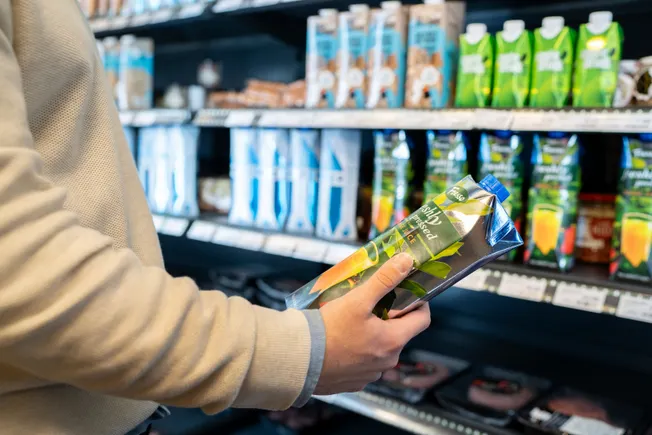Table of Contents
Effective packaging plays a pivotal role in determining the success of a food or beverage product in today’s competitive market. It goes beyond just being a container; packaging serves to safeguard product quality, extend shelf life, ensure food safety, and prominently showcase a brand’s values while setting it apart on crowded store shelves.
The ideal packaging solution strikes a balance between innovation, quality, and safety, influencing consumer purchasing decisions and differentiating a brand in the market. Moreover, choosing the right packaging can align with a brand’s environmental objectives, as food loss and waste account for a significant portion of global greenhouse gas emissions.
“Consumers now look to brands to make responsible choices,” says Babitha George, packaging portfolio manager at Tetra Pak U.S. and Canada. “Opting for recyclable packaging designed to prolong shelf life demonstrates an understanding of the impact of choices on both consumers and the planet.”
Embracing Sustainable Packaging Efforts
Ignoring the recyclability of packaging can erode consumer trust and loyalty, with brands risking credibility and preference if they fail to meet expectations. Brands play a crucial role in influencing sustainable consumer choices, making it imperative to offer easily understandable and sustainable packaging solutions that are transparent about their benefits and limitations.
“Validate your sustainability claims and make them practical,” advises George. “Partners like Tetra Pak simplify sustainability messaging, offering expertise and tools to deliver packaging that resonates with both your business and customers.”
Driving Action through On-Pack Messaging
The packaging itself serves as a prime platform to demonstrate how a brand prioritizes responsible decisions across the entire packaging lifecycle. From responsibly sourced materials to third-party certifications, brands can leverage on-pack messaging to showcase their commitment to sustainability.
Clear recycling instructions on packaging empower consumers to take action after product consumption, reinforcing the message that the brand is environmentally responsible. Compliance with regulations is also crucial, with packaging instructions aiding brands in staying ahead of evolving laws.
“Packaging now encompasses more than product protection,” highlights George. “It’s about safeguarding the planet, meeting compliance standards, addressing market demands, and building trust with all stakeholders.”
Choosing the Right Packaging Strategy
Companies seeking to navigate the complexities of food safety, shelf life, consumer perception, and sustainability must adopt packaging solutions that encompass all these facets. To enhance packaging, ensure compliance, and foster consumer trust, Tetra Pak’s George recommends the following steps:
- Evaluate your product portfolio to replace non-sustainable packaging with eco-friendly alternatives.
- Stay abreast of regulations by collaborating with legal and compliance teams.
- Educate consumers through clear labeling and verified sustainability claims.
- Share packaging goals and achievements to bolster brand leadership.
By prioritizing effective packaging strategies, food and beverage companies can deliver products that resonate with consumers who value safety, transparency, and environmental consciousness.
For more insights on Tetra Pak’s innovative sustainable approach to food and beverage packaging, visit tetrapakusa.com.

